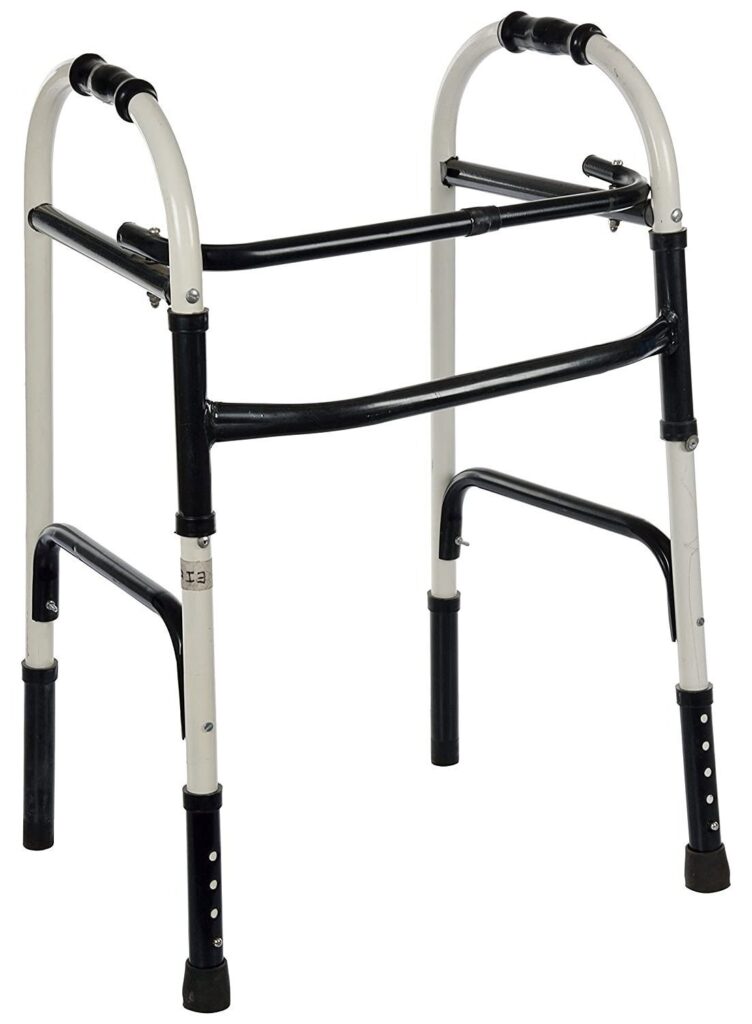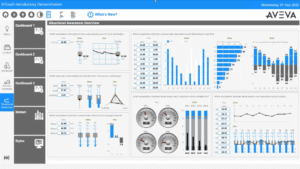There’s a quiet strength in taking steps each one a symbol of independence, movement, and dignity. But for many adults, especially as we age or recover from injuries, those steps can become uncertain. And yet, with the right support, life doesn’t have to slow down. In fact, it can become more vibrant, more free, and more you.
Freedom in motion isn’t just about walking it’s about living. It’s about getting your morning coffee without worry. Strolling the farmer’s market on a sunny Saturday. Traveling to see grandkids or meeting friends at your favorite café. It’s about moving through your world with confidence, grace, and peace of mind.
If you or someone you love is navigating changes in mobility, this guide is here to reassure you: support doesn’t mean surrendering freedom. With the right Adult Walker and mindset, you can walk tall at your own pace without losing your step.
A Shift in Perspective: Support Is Strength
There’s often a hesitation when it comes to using mobility aids. People worry it makes them look old or weak. But here’s the truth: there is no weakness in choosing safety, comfort, and independence. Using a mobility device whether it’s a walker, rollator, or cane can mean the difference between sitting out and showing up. It’s not a sign of decline; it’s a choice to participate in life on your own terms.
In fact, today’s mobility aids are far from clunky or clinical. They’re thoughtfully designed, stylish, lightweight, and customizable made to support an active, modern lifestyle.
Who Is This For?
You don’t have to be 80 to think about mobility. You might be:
-
Recovering from surgery or an injury
-
Living with a chronic condition like arthritis or MS
-
Navigating balance issues or fatigue
-
Helping a loved one regain confidence after a fall
Whatever your journey, your need is valid—and your path forward can be joyful.
Knowing When You Need Support
How do you know when it’s time to consider a mobility aid? It’s not always obvious.
Here are some common signs:
-
You feel unsteady walking longer distances
-
You avoid outings due to fear of tripping or falling
-
You get tired quickly when on your feet
-
You find yourself holding onto walls or furniture at home
-
You’ve had a fall (or a near miss) in the last six months
If any of these resonate, it may be time to explore your options. Support can be proactive not reactive. You don’t have to wait for a serious incident to improve your quality of life.
Choosing the Right Tool for Your Life
There’s no one-size-fits-all approach to mobility. Let’s break down a few popular options and how they fit different needs.
Canes: Light Support, Everyday Use
-
Ideal for minor balance concerns or light fatigue.
-
Great for tight spaces and quick errands.
-
Some models fold up and fit in a bag.
Best for: Those who need occasional balance support and want minimal equipment.
Standard Walkers: Stability First
-
No wheels; must be lifted slightly to move.
-
Very stable but best for shorter distances and flat surfaces.
-
Often used post-surgery or in early recovery stages.
Best for: Maximum stability at home or during recovery.
Rollators: Support with Flexibility
-
Come with 3 or 4 wheels, brakes, and a built-in seat.
-
Great for people who want to walk longer distances but need breaks.
-
Often include baskets or storage for bags and personal items.
Best for: Active individuals who want independence with comfort.
Hybrid Models: Walkers That Keep Up
-
Lightweight but sturdy, often foldable.
-
Designed for travel, sidewalks, and uneven terrain.
-
Modern aesthetics make them feel more like a lifestyle product than a medical device.
Best for: Those who are always on the go and care about design and portability.
Walking Into Confidence: The Mental Shift
Mobility isn’t just physical—it’s emotional, too.
The moment you decide to use a walker or support aid, you’re taking control of your story. That’s powerful.
But confidence doesn’t always arrive on day one. You may feel self-conscious at first, or frustrated by the change. That’s normal.
Here are a few mindset shifts that can help:
-
Your journey is your own. What others think is their business. Your well-being is yours.
-
Mobility is freedom. If this tool lets you live your life more fully, it’s a step forward not backward.
-
Independence evolves. You might need more support today, and less tomorrow or vice versa. That’s okay.
Real-Life Moments That Matter
Let’s paint a picture of what life can look like with the right mobility aid.
-
Grocery shopping without fatigue: Rollators with built-in storage make errands easier and more enjoyable.
-
Traveling with ease: Foldable models can come with you on planes, trains, or road trips—no more sitting out family vacations.
-
Walking the dog again: A support tool can bring back daily rituals you love.
-
Dancing at a wedding: Even if it’s just a few steps, being part of those moments matters deeply.
These moments may seem small—but they’re not. They’re your life, your memories, your joy.
Safety Without Sacrificing Style
Gone are the days of gray, clunky walkers. Today’s mobility aids come in sleek colors, modern materials, and ergonomic designs.
You can choose one that fits your personality—whether that’s classic black, bold red, or even floral patterns. Accessories like cup holders, phone caddies, and padded grips make them even more personalized.
When your aid feels like an extension of you—not a burden—you’ll be more likely to use it confidently and consistently.
Tips for Everyday Mobility Success
If you’re just starting your journey, here are some helpful, practical tips:
-
Get professionally fitted. Not all devices are one-size-fits-all. Height, posture, and stride matter.
-
Start small. Practice at home before going out. Build muscle memory and comfort.
-
Wear the right shoes. Supportive, slip-resistant footwear makes a big difference.
-
Keep paths clear. At home, remove clutter or rugs that could cause tripping.
-
Take breaks. Especially with rollators that include seats, resting is smart—not a sign of weakness.
Involving Loved Ones
If you’re a family member or caregiver, your role is incredibly important—but it doesn’t mean taking over.
Here’s how to be supportive without being overbearing:
-
Listen first. Let your loved one express fears or pride around using a device.
-
Celebrate small wins. Whether it’s a walk around the block or a trip to the park, these moments build momentum.
-
Be patient. Adjusting to change takes time—for both of you.
-
Ask, don’t assume. What feels helpful to you might feel controlling to them. Respect autonomy.
Looking Ahead: Technology and the Future of Mobility
As innovation continues, so does the quality of support. Smart walkers with sensors, GPS tracking, fall detection, and health data integration are already on the market—and getting better every year. This means more independence, more peace of mind, and more freedom to live your life fully.
Conclusion
Freedom in motion isn’t about how fast you go. It’s about choosing to move—on your own terms. Whether you’re recovering, adjusting, or simply aging with intention, there is power in every step you take. Support doesn’t hold you back. It helps you rise, roam, and reconnect with the world around you. So the next time you see someone walking tall with a rollator or confidently navigating with a cane, know this: they’re not slowing down. They’re showing up.
- Freedom in Motion – Confident Mobility for Everyday Life
- Discover how to stay active, independent, and confident with the right mobility support. Walk tall and live fully—without losing your step.
- Adult Walker,
Related posts:
 Best Topical Finasteride & Minoxidil Spray for Hair Regrowth
Best Topical Finasteride & Minoxidil Spray for Hair Regrowth
 Blue Grass Guppy: A Mesmerizing Addition to Your Aquarium Life
Blue Grass Guppy: A Mesmerizing Addition to Your Aquarium Life
 Famotidine Pepcid for Cats: What Pet Owners Need to Know for Their Feline Friend
Famotidine Pepcid for Cats: What Pet Owners Need to Know for Their Feline Friend
 Navigating Mental Health: The Importance of Black Therapists in New York for Bipolar Disorder and Depression Treatment
Navigating Mental Health: The Importance of Black Therapists in New York for Bipolar Disorder and Depression Treatment
 How to Know If You Need to See a Gastro Doctor for Stomach Pain
How to Know If You Need to See a Gastro Doctor for Stomach Pain
 How Massage Therapy Can Improve Your Health: A Guide for Queens Residents
How Massage Therapy Can Improve Your Health: A Guide for Queens Residents
 A Complete Guide on the Pricing of the Composite Bonding in London
A Complete Guide on the Pricing of the Composite Bonding in London
 Your brief and useful guide to removable orthodontic appliances
Your brief and useful guide to removable orthodontic appliances







